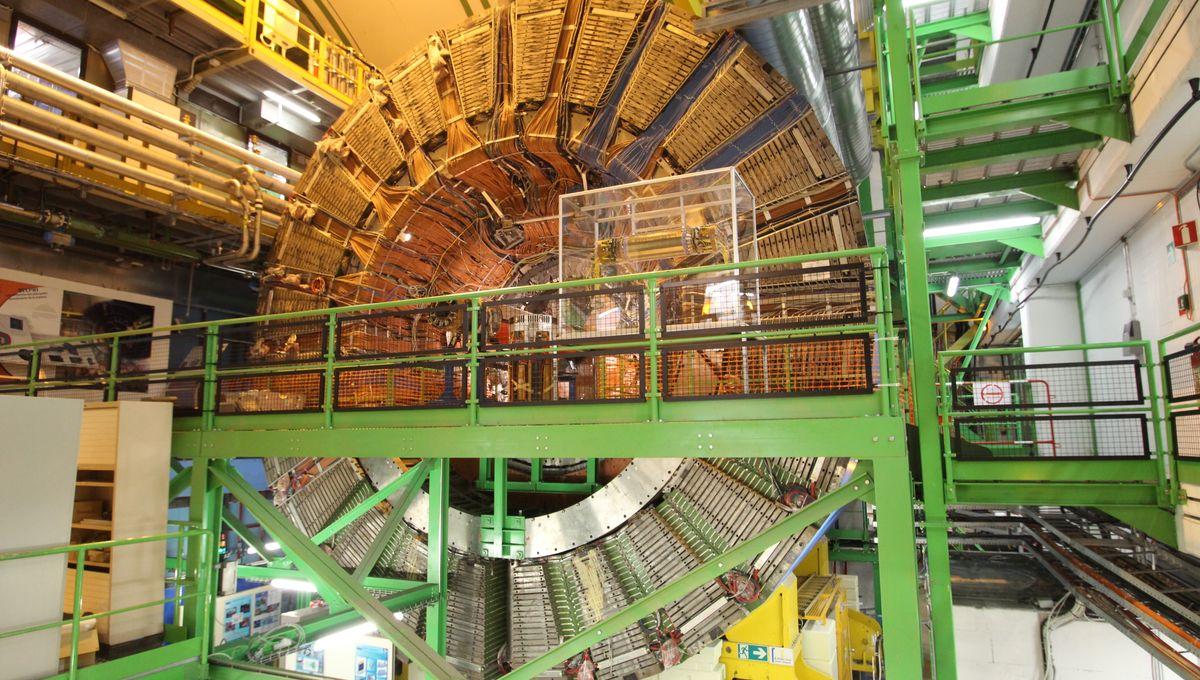-
Новости
- ИССЛЕДОВАТЬ
-
Страницы
-
Статьи пользователей
-
Форумы
Anatoli Bugorski: The Man Who Put His Head In A Particle Accelerator And Survived

Anatoli Bugorski: The Man Who Put His Head In A Particle Accelerator And Survived
There's nothing particle physicists like more than crashing particles together and seeing what comes out of the mess. Such experiments can help us find evidence of particles and processes predicted by the Standard Model of particle physics – such as the Higgs Boson – or allow us to probe the conditions of the early universe, for example.
Particle accelerators, though, are not entirely without risk, smashing particles together at enormous energies. "The Large Hadron Collider is the largest and most powerful collider in the world," CERN explains of its own collider. "It boosts the particles in a loop 27 kilometres [17 miles] in circumference at an energy of 6.5 TeV (teraelectronvolts), generating collisions at an energy of 13 TeV." Despite overblown concerns of black holes being created in these collisions, particle accelerators remain safe to anybody who doesn't place their body inside of it when it is switched on. Which brings us neatly to Russian physicist Anatoli Bugorski who, in 1978, had a high-energy proton beam pass through his head. Bugorski was working at the Institute for High Energy Physics in Protvino, Moscow Oblast, Russia, and was inspecting a piece of equipment that had malfunctioned when the accident took place. Unbeknownst to him, several safety mechanisms had also failed, meaning that when he leaned over to get a good look at his task, a proton beam shot through the back of his head at close to the speed of light. Or at least, closer to the speed of light than you'd like a proton beam to be traveling at when it shoots clean through the back of your head and out just underneath your nose. ⓘ IFLScience is not responsible for content shared from external sites. At first, he felt no pain. He knew what had happened, as he had seen a light “brighter than a thousand Suns," and understood the gravity of the situation. At this point, he didn't tell a soul, and merely completed his day's work before heading home and waiting for the inevitable to happen. Absorbing 5 grays (500 rads) of radiation would usually lead to death. Though he didn't yet know it, he had been hit with between 2,000-3,000 grays (200,000-300,000 rads). In the night, his face began to swell beyond recognition, prompting him to visit the doctors the following morning. From there, he was taken to a clinic in Moscow, though largely so that his death could be observed rather than for any expectation that his life could be saved. The next few days saw his skin peel off around the entry and exit wounds, showing a clean path burned right through his skin, skull, and brain. Remarkably, though, he did not die. The brain tissue continued to burn away over the ensuing years, and his face became paralyzed on the left side, where his hearing was also lost. Weirder still, as he aged the right side of his head showed signs of aging, while the left side did not quite as much. ⓘ IFLScience is not responsible for content shared from external sites. Over the next few decades, he experienced seizures but remained functional, continued his work as a physicist, and completed a PhD. As far as people who have put their heads into a particle accelerator go (and to be fair, that's a demographic of one), he was pretty lucky. The narrow focus of the beam, though it caused massive damage, likely kept the damage limited to an area of brain that he could, evidently, live without. For the decade after his accident, he was unable to tell anyone about it, given the notorious secrecy of the Soviet Union. He survived well beyond the end of the USSR, however, and has subsequently revealed to the world what happened to him, and expressed a desire to be studied for the advancement of science. "This is, in effect, an unintended test of proton warfare," he told Wired in 1997, adding: "I am being tested. The human capacity for survival is being tested." In the years following his accident, he regularly attended a radiation clinic in Moscow and became a "poster boy" for Soviet radiation medicine. Eventually, despite what you might imagine of someone who went through what he did, Bugorski outlived the Soviet Union, and he remains alive to this day.


